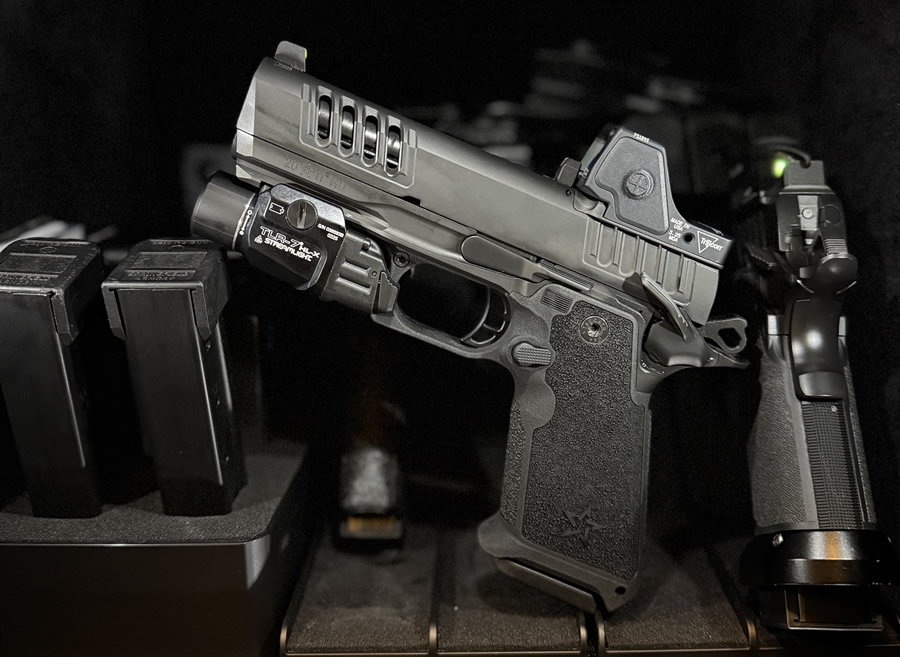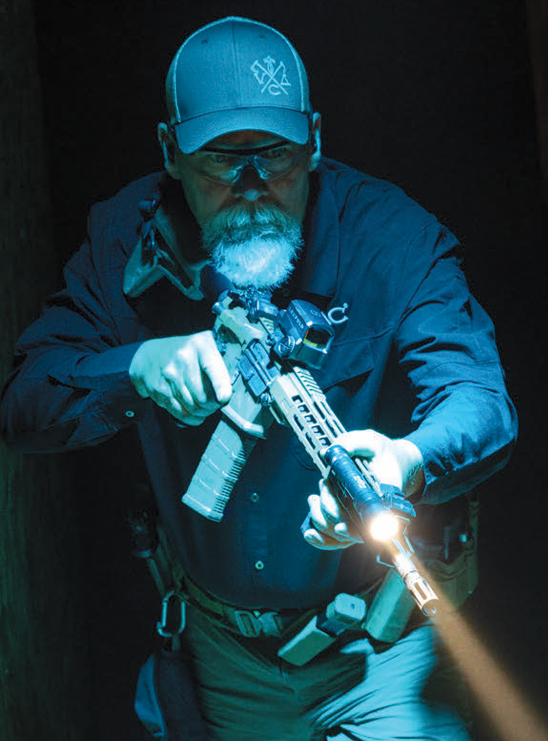Are they Worth having?
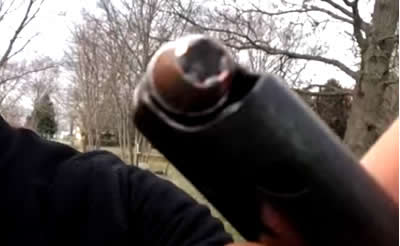
In the early days 1900’s pocket pistols were very popular, especially in .32 ACP caliber. This was developed by John Moses Browning which featured in the first reciprocating slide of the FN Model 1900.
European police and military used the .32 as their duty handguns. The U.S. used a larger caliber pistol but the .32 was a big hit for the private Joe.
Some of the common pocket hammer-less guns that many carried were the Colt 1903 and Savage Model 1907. Shooting these single-action steel frame pistols in the lightweight caliber was really easy. Which is probably why many liked it.
Unfortunately, as time goes by the .32’s have gone out of favor, which most are going for a bigger caliber. There isn’t many gun manufacturers making the .32 ACP, even in this current pocket gun trend. Here’s a list of some .32 ACP that you might find at the gun store or online.
- Beretta 3032 Tomcat
This .32 caliber is a version of the Bobcat 21A. Its a double action/single action with the tip-up barrel. This gun is consider wide and heavy for a pocket gun. - CZ 83
CZ makes them in other caliber as well, but the 83 is the better buy. Has a double-stack magazine (15+1). - Beretta 81FS
The 81 is a double-stack compact, magazine holds 12+1. If you’re familiar with the full standard 92FS (9mm), this is the smaller version. - Kel-Tec P-32
This .32 ACP Kel-Tec may be the lightest out of the bunch. It’s a polymer-framed internal-hammer double action that holds 7+1. - Signal 9 Reliant
The four barrels makes this 32 stands out. Signal design this with no moving external parts for reliability. - North American Arms Guardian
Designed to be convenient and reliable. Holds 6+1 rounds, has fixed sights and DAO triggers. Lifetime warranty backed by Guardians. - Seecamp LWS
Could be one of the smallest pistol out on the market. Packs 6+1 rounds, uses a delayed blowback action to cycle the rounds. No sights.
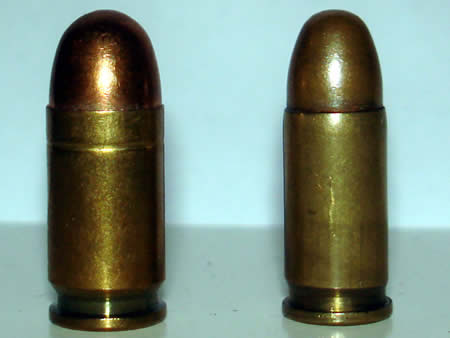
Performances

So far the only positive thing about the .32 ACP is the recoil. The recoil is lighter than the .380 ACP. So is this a big enough difference between the two calibers that has an impact on how well one shoots? In order to test this out, there needs to be a side-by-side testing (shootout). One of the best gun drill is the 5X5 drill. This test as design to measure performance.
The drill consists of 5 shots at 5 yards into a 5 inch cirle in under 5 seconds from a low ready position.
The following test results was conducted from Chris Baker of Lucky Gunner. Chris shot the Kel-Tec P32 and the .380 S&W Bodyguard. The main objective was to see if there were any difference in the times between the .32 ACP and .380 ACP. Here’s the results below.

The time as you can see is not much of a differences. Now if we look at this maybe from a lesser skill shooter. The times would obviously be slower, but we can still logically deduct that the .32 ACP tame recoil is still the easier caliber to manage.
Ballistics
We live in a bigger is better world. So one of the thing that many gun enthusiasts are concern with is the perceived lack of power of the .32 ACP. It is true if one compare the .32 to a more powerful .45 ACP – totally big differences. But, lets look at some ballistic gel to give us an idea of what the .32 ACP is capable of.
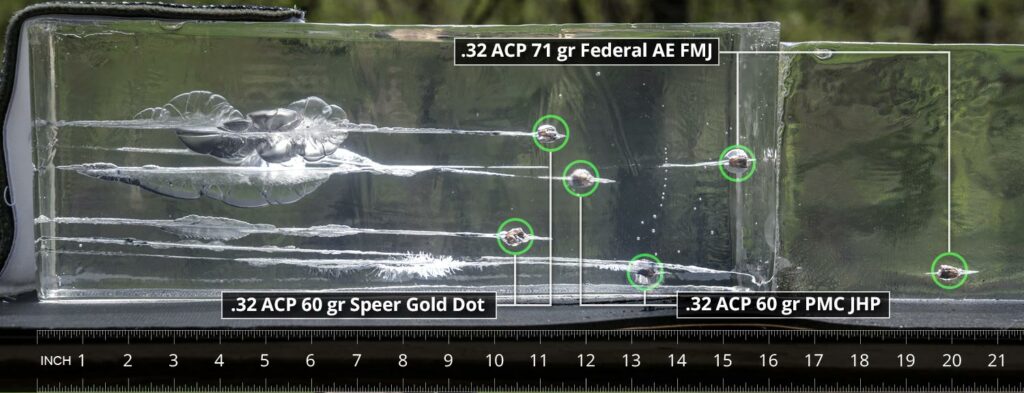
This test shows the following ammo used from Speer Gold Dot, Federal AE and PMC.
Speer Gold Dot – This 60 grain penetration was at 11 inches with no expansion. This is typical for a smaller round that doesn’t have enough energy.
Federal AE FMJ – This 71 grain full metal jacket round had better penetration than the Speer Gold, going in at 15.5 inches and 20 inches. The gun experts will say this is over penetration, chances are the smaller caliber energy will be lost when it exits the target.
PMC JHP – This 60 grain bullet penetration averaging around 13 inches. This is considered the ideal level.
This next illustration below shows a comparison between the .32 ACP and the .380 ACP gel test.
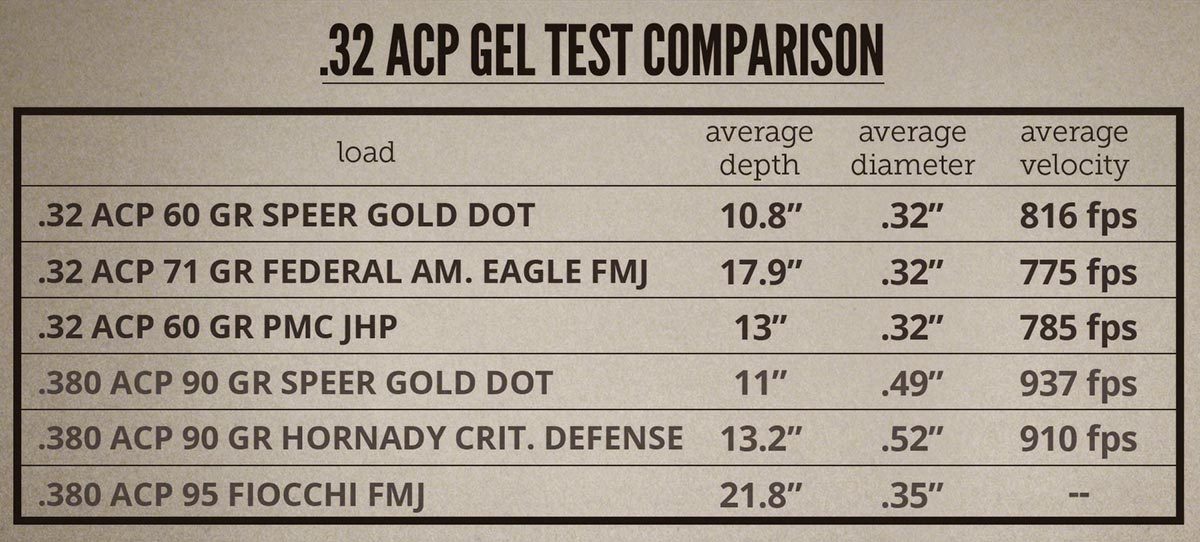
At first glance the .380 ACP has the better penetration. The Glock 42 was used for the .380 with a longer barrel than the .32 ACP Kel-Tec.
The Hornady Critical Defense round performed great in terms of penetration and expansion. So ballistic wise, the .380 has an edge. But, if you’re pouncing FMJ in a shorter barrel pocket pistol, there isn’t much a difference between a .32 and a .380.
Final Shot
The .32 ACP has the potential to be a lot more if ammo manufacturers develop more powerful loads. Unfortunately, the mass aren’t interested in the .32’s as much as the .380 ACP. If you’re adamant about carrying the .32’s, here are some .32 ACP ammo for you to check out from Lucky Gunner, these were tested from a pocket pistol short barrel (KeltecP32):
- Buffalo Bore Tac-XP +P – 60 gr HP
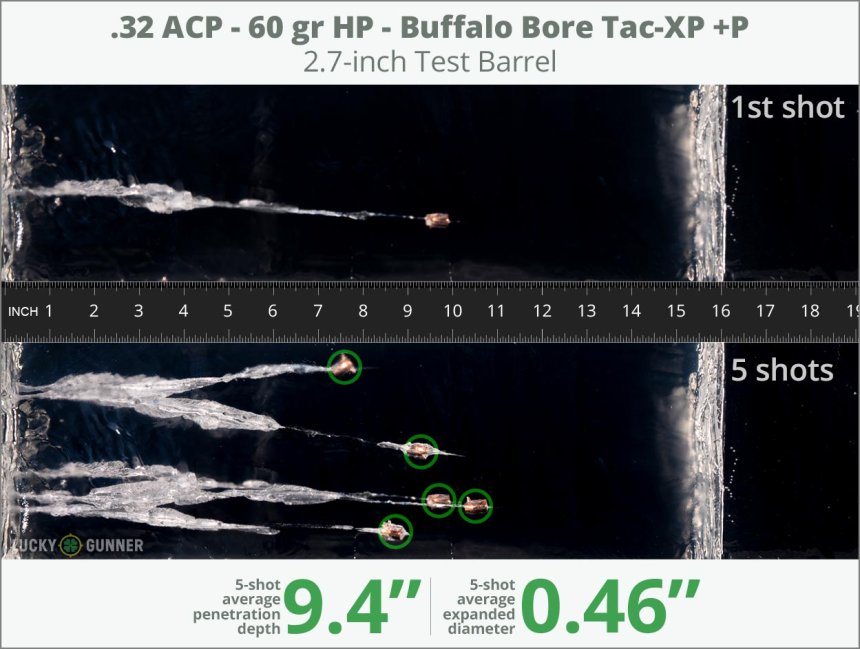
- CorBon – 60 gr JHP
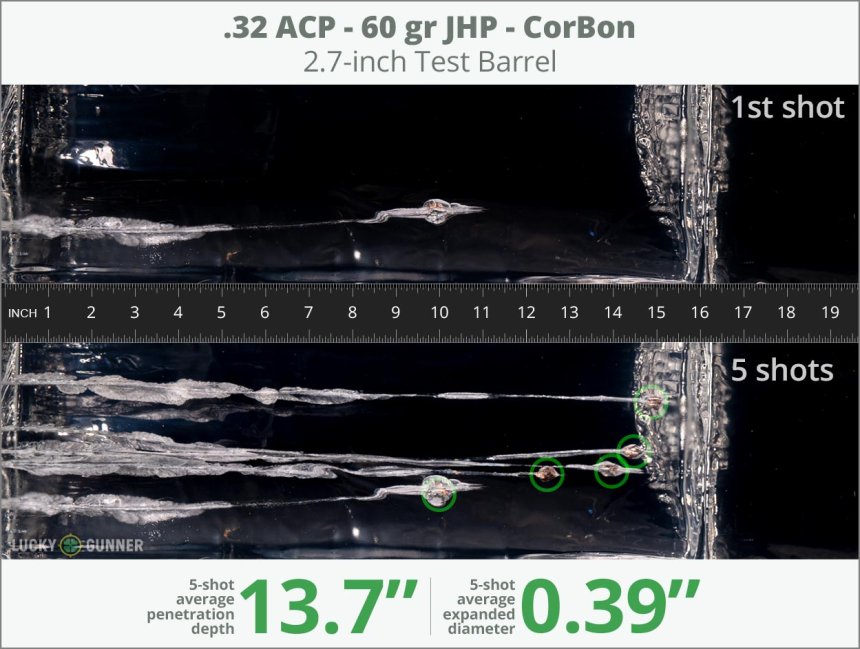
- Federal Hydra-Shok – 65 gr JHP
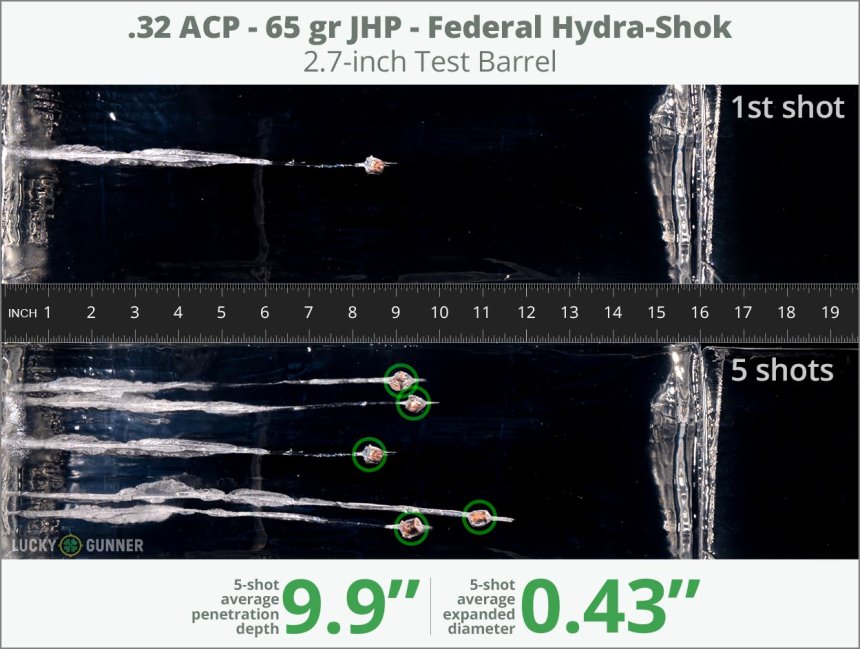
- Fiocchi XTP – 60 gr JHP
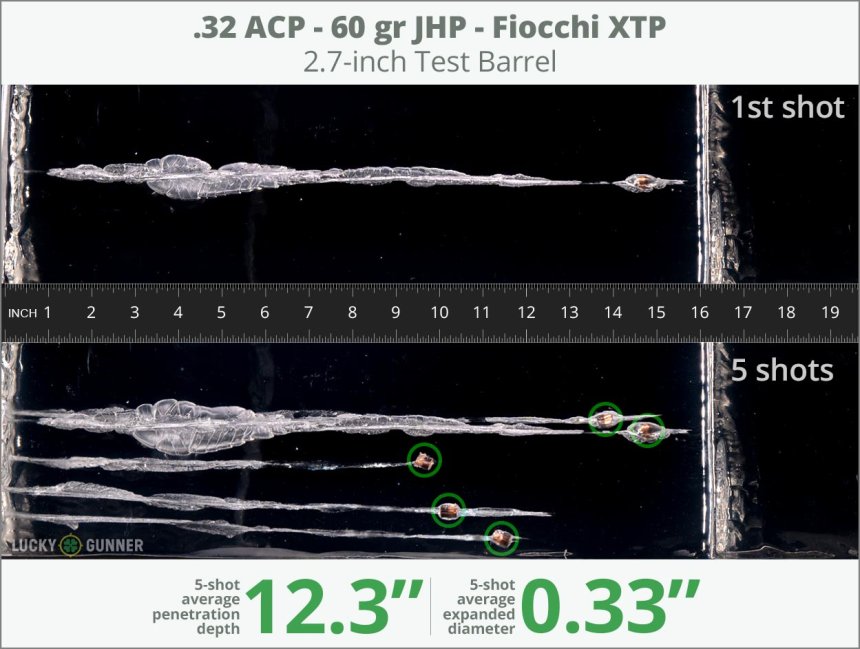
- Fiocchi XTP – 73 gr FMJ
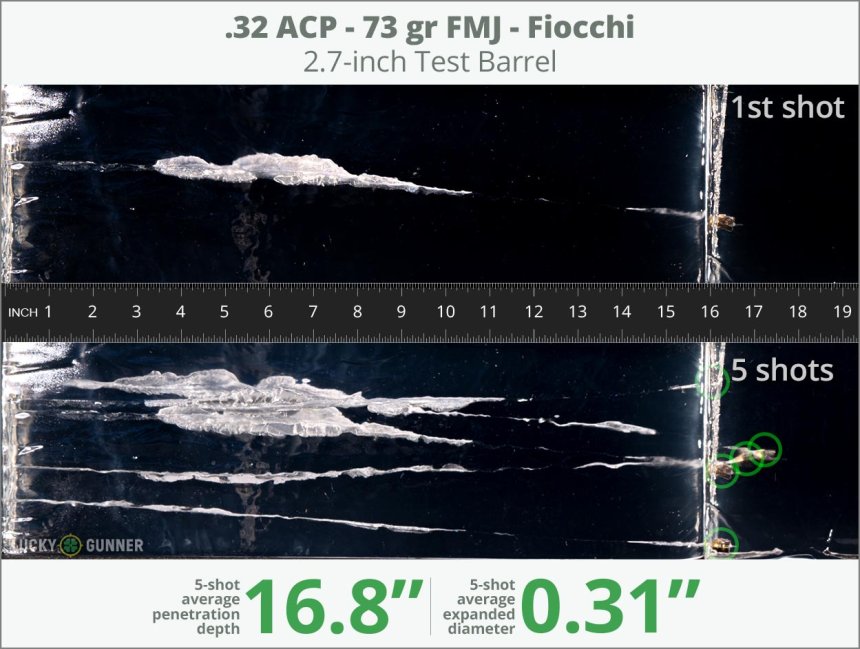
- Hornady XTP – 60 gr JHP
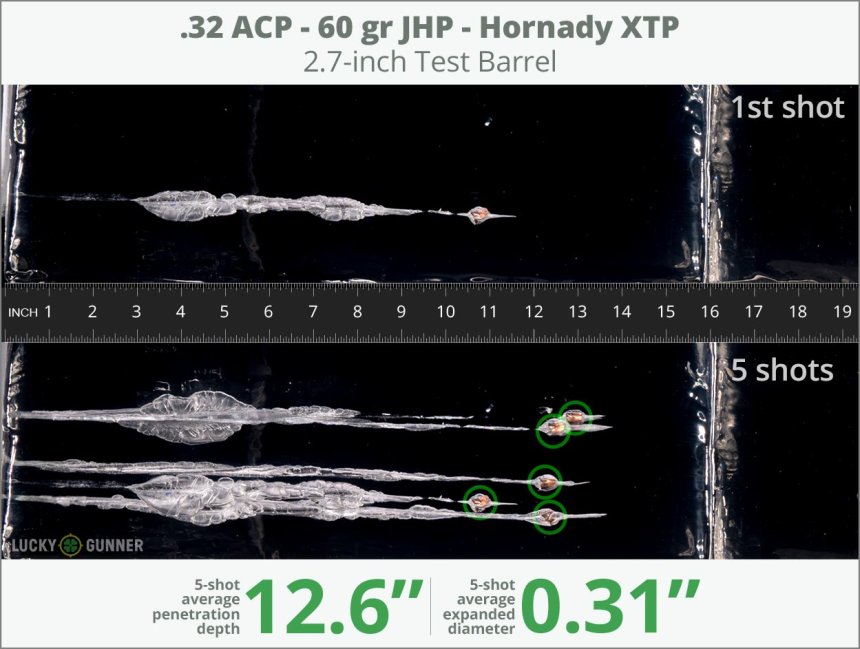
Photos from LuckyGunner and Wikipedia


